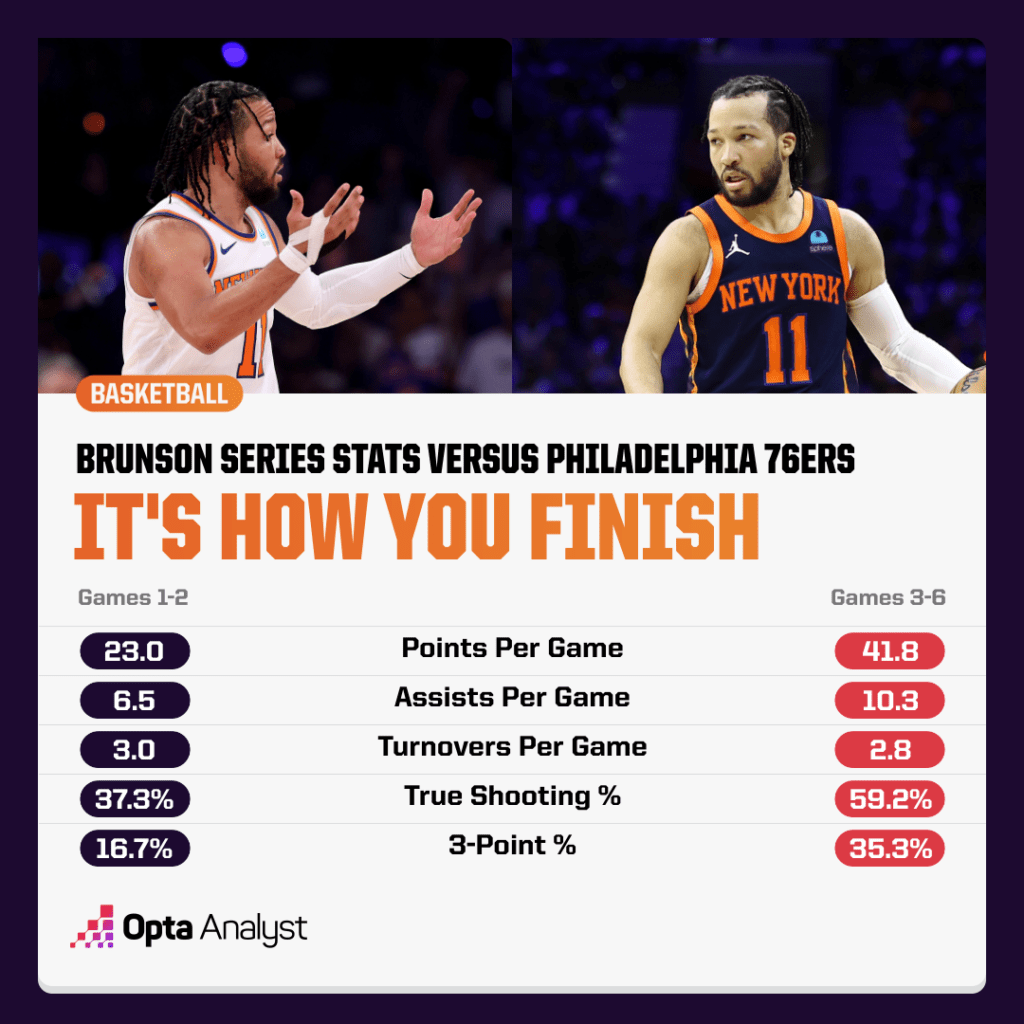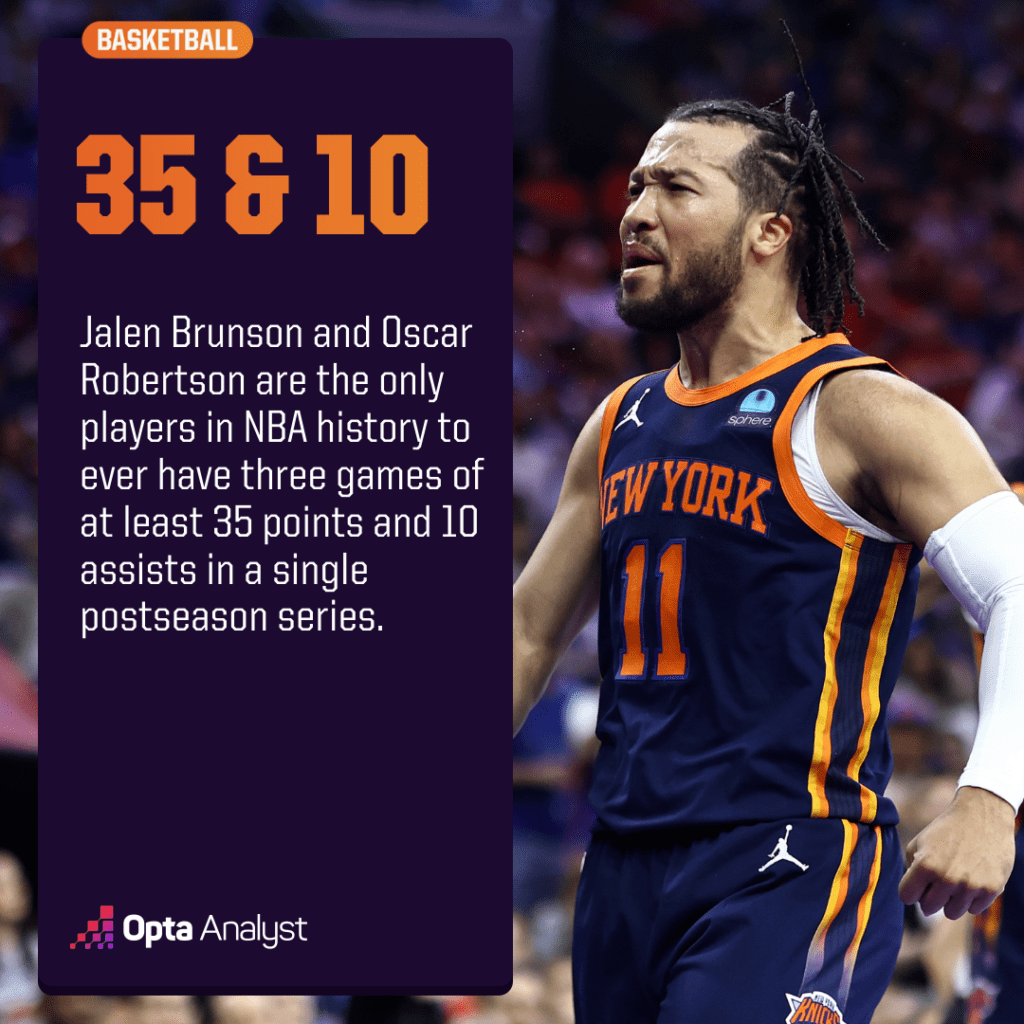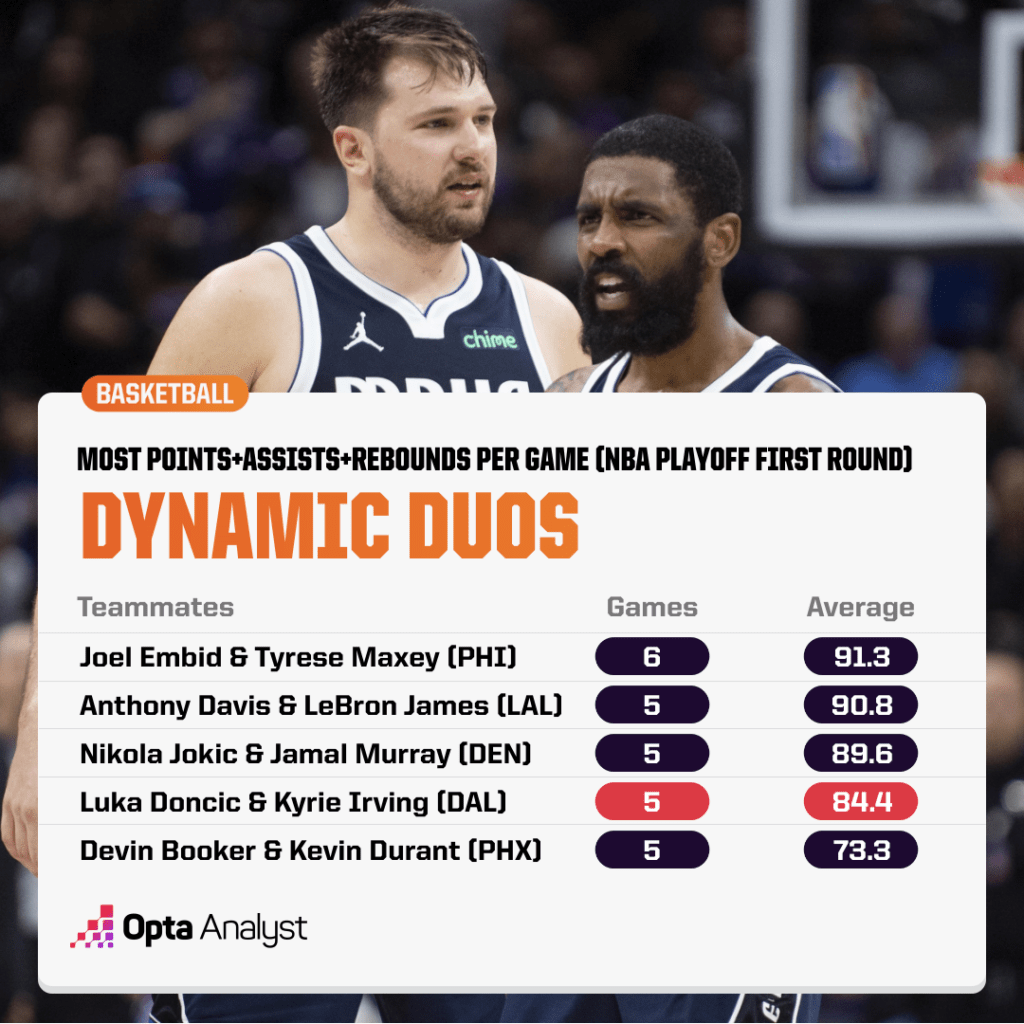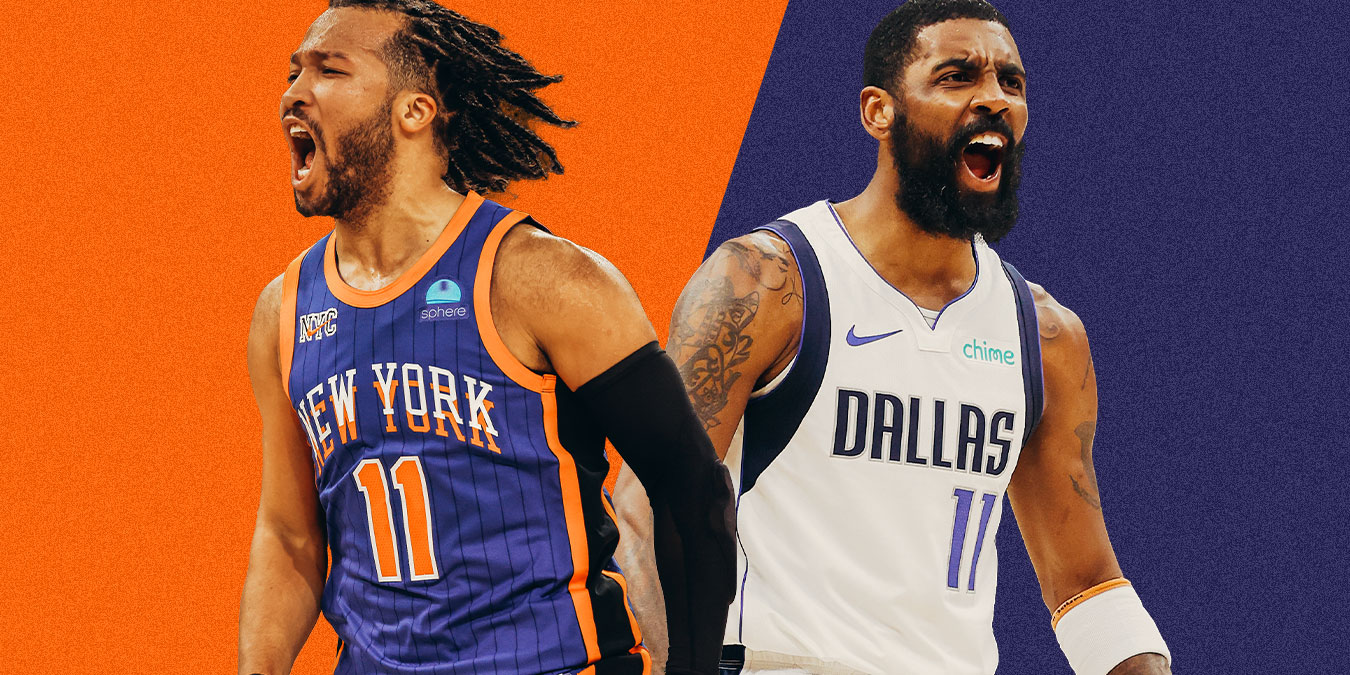It’ll be 20 years ago this summer since the offseason when the Dallas Mavericks allowed Steve Nash to walk away via free agency and sign with the Phoenix Suns.
The rationale for that decision revolved around some combination of concerns about Nash’s size, age and injury history. The point guard, of course, responded by becoming a back-to-back NBA MVP and the conductor of one of the greatest offenses in the league’s history.
You live, and you learn, right?
Unfortunately, that isn’t always the case, particularly not for the Mavericks.
Fast forward to the offseason of 2022, and the Mavericks let Jalen Brunson (for many of the same reasons they did with Nash) waltz his way into Madison Square Garden and sign with the New York Knicks. Now, Brunson is – you guessed it – playing like an MVP candidate, having just led the Knicks to a first-round playoff series win over the Philadelphia 76ers in six games.
It’s easy to dunk on the Mavericks for not paying Brunson, especially now that he’s blossomed into a full-blown star. But less than a year later, they nabbed a disgruntled Kyrie Irving to fill his place.
Today, both of these floor generals are thriving in their new homes – hammering home a very important life lesson: Everything happens for a reason.
Jalen Brunson is Like Luka Doncic in New York
In the middle of Game 4 during the Knicks-Sixers series, Richard Jefferson, a former NBA player who was one of the national TV analysts that night, called Brunson the best player to wear a Knicks uniform since Jefferson’s time in the league began as a player in 2001.
While an examination of all the great Knicks’ players since 2001 would be compelling, that’s not really the point. The point is Jefferson’s words perfectly illustrate what Brunson has done for this long-downtrodden franchise.

Brunson means everything to the Knicks this season. He gives them toughness, identity, intellect and hope. But, more importantly, at least from an on-court perspective, he gives them someone they can run high-level offense through.
Since 1986, the Knicks have only finished in the NBA’s top five in O-TRACR, our era-adjusted version of offensive rating, four times. But that includes the last two seasons behind Brunson’s floor guidance.
Ironically enough, the Knicks’ version of Brunson functions a lot like his former partner-in-crime, Mavericks All-Star guard Luka Doncic.
During the regular season, Brunson beat out Doncic (and the rest of the league, for that matter) in time of possession per game, per NBA.com. In the NBA playoffs, Brunson has continued this trend, handling the ball for two minutes per game more than the next guy (coincidentally enough, that next guy is Doncic). Simply put, Brunson gives New York a hub to make most of the team’s major offensive decisions – a phenomenon known by many in the NBA community as heliocentrism.
Heliocentricism’s detractors will mention the offensive style’s tendency to stagnate against higher-level opponents as a reason why the Brunson-led Knicks have a low ceiling. These critiques are fair (although there is some more nuance to it), but against the Philadelphia 76ers, Brunson has shown he has more off-ball spunk than his helio-ball contemporaries, such as Doncic and guards Trae Young of the Atlanta Hawks and James Harden of the Los Angeles Clippers.
The following examples are simple, but they illustrate the subtle versatility of Brunson’s approach. In both plays, Brunson starts the possession out in helio-mode, only to give it up and transform into the East Coast iteration of Stephen Curry.
The main problem with pure heliocentrism is that a lot of players who run it (Doncic not included) don’t have the requisite counters in their bag for when defenses start to slow them down. Brunson has a seemingly unlimited number of counterpunches he can throw – like his ability to go off-ball when nothing else seems to be working.
The depth of his offensive arsenal is a big reason why he bounced back after a slow start to the playoffs and helped the Knicks push past the Sixers (a series we predicted them to win) and into the Eastern Conference semifinals against the Indiana Pacers.

Kyrie Irving Was Always a Better Robin
The Knicks being better off with Brunson than without him is a pretty easy argument to make. But how could the team that everyone is clowning for losing him also be in a better spot?
Before we get into that argument, we’d be remiss not to mention Dallas didn’t simply swap Brunson for Irving. To acquire Uncle Drew’s services, the Mavs had to part ways with 3-and-D ace Dorian Finney-Smith. However, one could argue they got a younger, more athletic version of Finney-Smith in PJ Washington (although someone else could argue they had to sacrifice significant future draft capital to get him).
Anyway, when it comes to team building, you want to avoid an over-redundancy of certain skills as much as possible. One of those skills is on-ball creation. You want multiple players who can create their own offense, but you don’t want their styles to be so similar. This is a big reason the Phoenix Suns’ Big Three hasn’t worked the way people (myself included) initially expected.
Brunson is a splendid player, but he’s eerily similar to Doncic stylistically – both of them are floor generals who play at a more methodical pace. While they had great success together, Brunson’s powers were neutralized to a degree in Doncic’s shadow (as seen by his explosion since swapping teams).
Irving gives Doncic a partner with a contrasting cadence. Instead of playing with patience and poise, Irving plays with speed and tempo. Whereas Brunson holds the ball for an average of 5.86 seconds per touch, Irving averages just 4.12 seconds.
Whenever Dallas’ offense gets stuck in the proverbial mud, it can rely on Irving to give the offense a jump. Much like he did in the second quarter of their near 31-point comeback against the Los Angeles Clippers in Game 4 of their first-round series in the Western Conference.
As mentioned, Brunson is a good off-ball player. But there is an important distinction that needs to be made: He’s a good off-ball player as a No. 1 offensive option, which is great for New York. However, what Dallas needs is a good off-ball player for a No. 2 option.
Irving, with his breadth of creativity and cache of juke moves, gives the Mavericks just that.
The following play illustrates how Irving baits the jumpy Russell Westbrook into thinking he’s going to curl toward the 3-point line to receive a dribble handoff, only to instead cut toward the rim for an easy layup.
In addition to the offensive exploits, Irving’s defensive intensity provides fuel for the Mavericks. Common wisdom will tell you they are up 3-2 in the series against the Clippers because of their offense, but it’s actually been their defense (fifth in defensive rating in these playoffs) that has gotten them to where they are now.
You can see the differences in Irving’s fit with Doncic compared to Brunson’s previously by looking at their net ratings together. This season, Irving and Doncic have a net rating of +9.5 (per PBP Stats) in 1,297 minutes together. Meanwhile, in 2021-22, Brunson and Doncic played together for 1,316 minutes and posted a net rating of +3.8.

This isn’t to say Irving is a better player than Brunson. In fact, I’d argue the exact opposite.
But Irving, who won the 2016 NBA title with the Cleveland Cavaliers alongside LeBron James, is a better Robin to Doncic’s Batman when it comes to teammates; Brunson is better at being a leading man.
After a few interesting twists of fate, Brunson and Irving are both exactly where they need to be. And if Dallas closes out the Clippers, look for both players to make their teams quite competitive in the second round.
Check out our MLB, NBA and NFL coverage. Follow us on X and Instagram for more!
